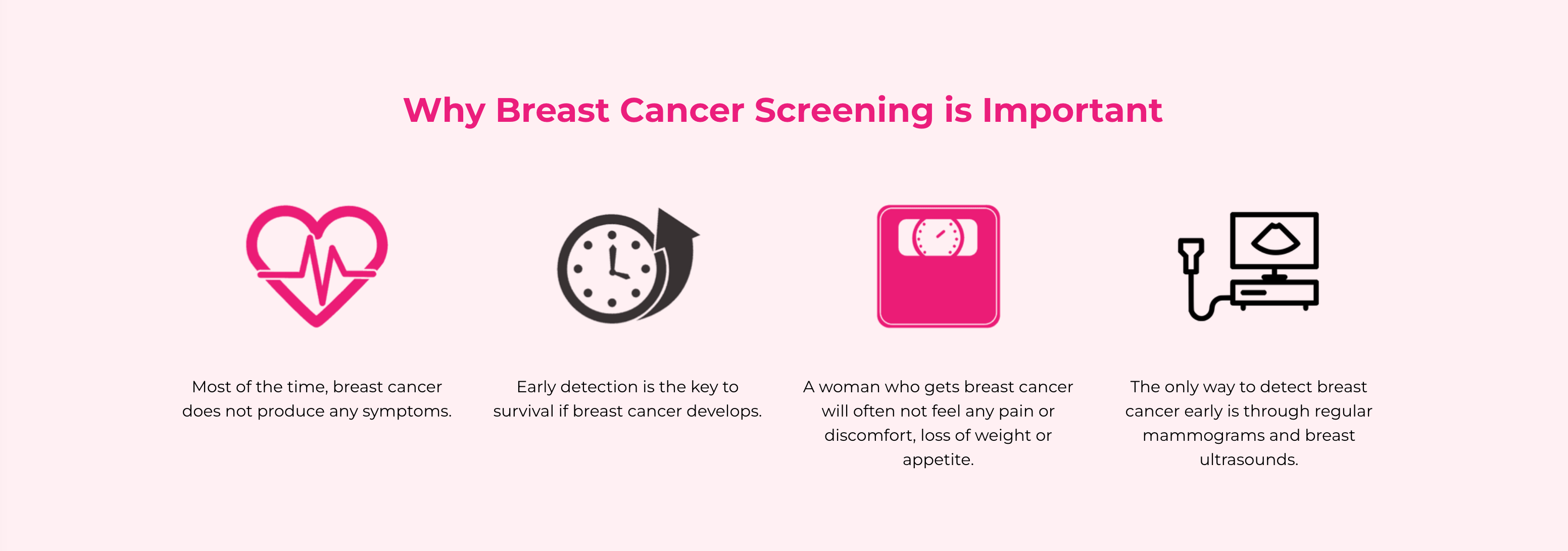Breast Cancer Screening


The Importance of Breast Cancer Screening
Most of the time, breast cancer does not produce any symptoms. A woman who gets breast cancer will often not feel any pain or discomfort, loss of weight or appetite. She will only feel a hard stone-like lump when the cancer grows bigger. Thus, the only way to detect breast cancer early is through regular mammograms and breast ultrasounds.
Also, early detection is the key to survival if breast cancer develops — when the tumour is small, there are multiple surgical options, and cure is possible.


Screening Services
Mammogram
A mammogram makes use of low doses of X-ray to detect lumps within the breast. During the scan, each breast will be placed between 2 planes of the machine, and subsequently compressed. This helps to flatten the breast tissue and allow appropriate imaging of the breast.
Breast Ultrasound Imaging
During a breast ultrasound, a ultrasound probe is placed on the skin and moved over the breast to detect the presence of lumps.
Breast Magnetic Resonance Imaging (MRI)
The breast MRI is not a routine screening that is done for all women. It is sometimes used for further investigations or for women of certain risk profiles.
Genetic Risk Assessment for Breast Cancer
A genetic risk assessment is used to specifically look out for mutations in the BRCA gene. Women who have mutated BRCA genes have a higher chance of developing breast cancer. This test is mainly indicated for women who have a very strong history of breast cancer in the family, especially if their family members were affected below the age of 50.














